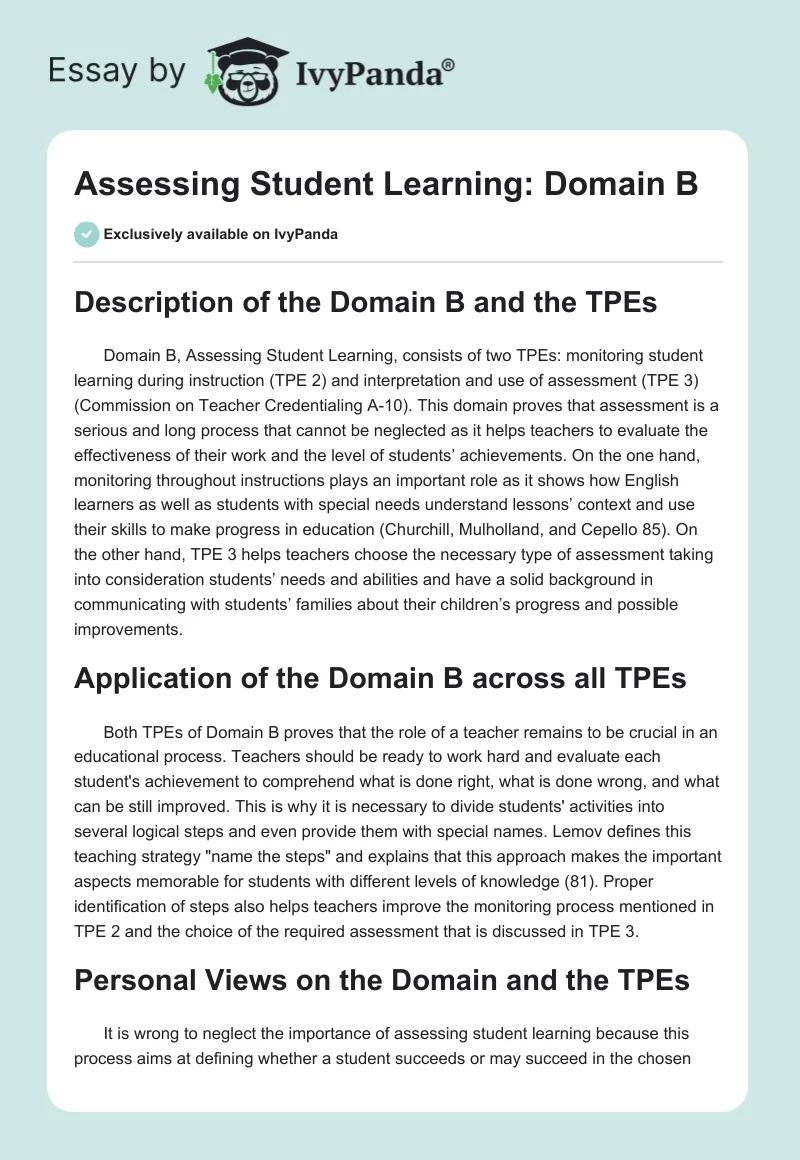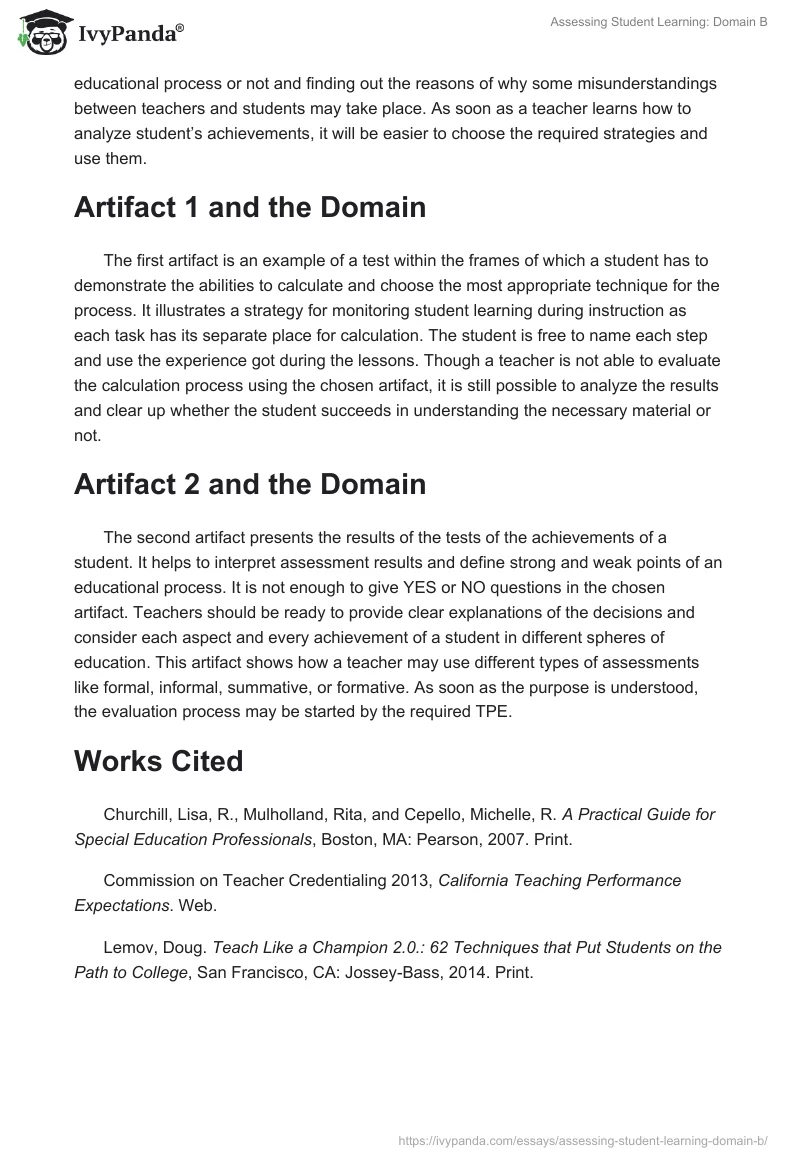Description of the Domain B and the TPEs
Domain B, Assessing Student Learning, consists of two TPEs: monitoring student learning during instruction (TPE 2) and interpretation and use of assessment (TPE 3) (Commission on Teacher Credentialing A-10). This domain proves that assessment is a serious and long process that cannot be neglected as it helps teachers to evaluate the effectiveness of their work and the level of students’ achievements. On the one hand, monitoring throughout instructions plays an important role as it shows how English learners as well as students with special needs understand lessons’ context and use their skills to make progress in education (Churchill, Mulholland, and Cepello 85). On the other hand, TPE 3 helps teachers choose the necessary type of assessment taking into consideration students’ needs and abilities and have a solid background in communicating with students’ families about their children’s progress and possible improvements.
Application of the Domain B across all TPEs
Both TPEs of Domain B proves that the role of a teacher remains to be crucial in an educational process. Teachers should be ready to work hard and evaluate each student’s achievement to comprehend what is done right, what is done wrong, and what can be still improved. This is why it is necessary to divide students’ activities into several logical steps and even provide them with special names. Lemov defines this teaching strategy “name the steps” and explains that this approach makes the important aspects memorable for students with different levels of knowledge (81). Proper identification of steps also helps teachers improve the monitoring process mentioned in TPE 2 and the choice of the required assessment that is discussed in TPE 3.
Personal Views on the Domain and the TPEs
It is wrong to neglect the importance of assessing student learning because this process aims at defining whether a student succeeds or may succeed in the chosen educational process or not and finding out the reasons of why some misunderstandings between teachers and students may take place. As soon as a teacher learns how to analyze student’s achievements, it will be easier to choose the required strategies and use them.
Artifact 1 and the Domain
The first artifact is an example of a test within the frames of which a student has to demonstrate the abilities to calculate and choose the most appropriate technique for the process. It illustrates a strategy for monitoring student learning during instruction as each task has its separate place for calculation. The student is free to name each step and use the experience got during the lessons. Though a teacher is not able to evaluate the calculation process using the chosen artifact, it is still possible to analyze the results and clear up whether the student succeeds in understanding the necessary material or not.
Artifact 2 and the Domain
The second artifact presents the results of the tests of the achievements of a student. It helps to interpret assessment results and define strong and weak points of an educational process. It is not enough to give YES or NO questions in the chosen artifact. Teachers should be ready to provide clear explanations of the decisions and consider each aspect and every achievement of a student in different spheres of education. This artifact shows how a teacher may use different types of assessments like formal, informal, summative, or formative. As soon as the purpose is understood, the evaluation process may be started by the required TPE.
Works Cited
Churchill, Lisa, R., Mulholland, Rita, and Cepello, Michelle, R. A Practical Guide for Special Education Professionals, Boston, MA: Pearson, 2007. Print.
Commission on Teacher Credentialing 2013, California Teaching Performance Expectations. Web.
Lemov, Doug. Teach Like a Champion 2.0.: 62 Techniques that Put Students on the Path to College, San Francisco, CA: Jossey-Bass, 2014. Print.


